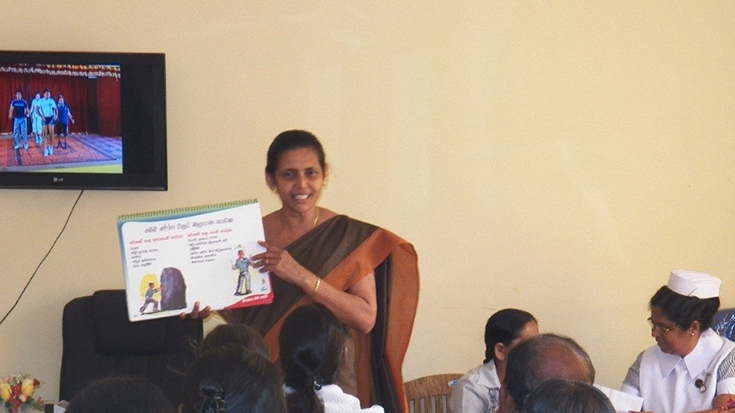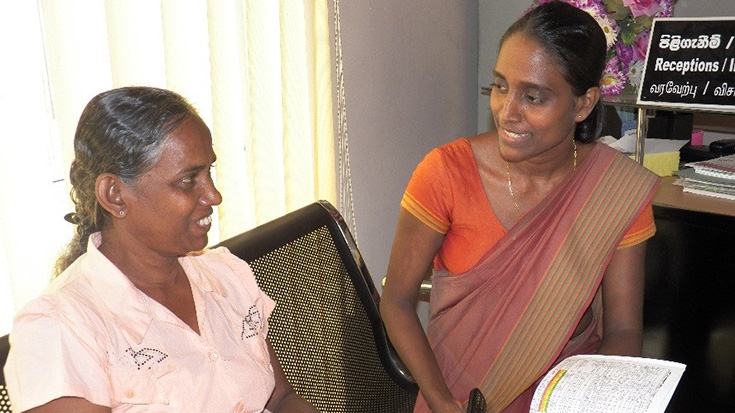What are NCDs and why does it matter?
"NCDs are not contagious. If someone is diagnosed with a NCD, it cannot be pass onto another person. Germs do not cause NCDs. It does not happen overnight. It happens only when a person lives with risk factors over a period of time.Once diagnosed, NCDs most often cannot be cured (chronic) and the person will live with it. If it’s not well controlled, it can become a cause of death or cause long term ill health. NCDs fall under two categories; acute NCDs includes deaths and disability caused by injuries such as traffic accidents, falls, burns, poisoning and drowning fall into the category of acute NCDs, which are preventable if proper safety measures are adopted. Chronic NCDs are diseases like diabetes, cancers, heart disease, strokes, hypertension, chronic respiratory diseases, chronic kidney diseases, and mental health related disease,” explained Dr. Erandhi Kularatne. Most chronic NCDs are preventable and if not, its onset can be delayed if risk factors such as smoking, alcohol, chewing beetle leaves, obesity, unhealthy diet, high salt, sugar, trans fats, processed foods and sedentary lifestyles are addressed. This can be achieved through awareness, counselling, handholding and creating environments that encourage healthy living.
NCDs accounts for 70 percent of total deaths in Sri Lanka. About 86 percent of injury related deaths, 57 percent of cancer deaths, 41 percent of heart and circulatory disease related deaths, and 35 percent of the respiratory related deaths occur prematurely (before they reached 65 years of age). Male deaths are higher than female deaths across most age groups in Sri Lanka and at 30 years, the life expectancy difference for men and women is 8 years. Unless there are symptoms of illness, the practice of healthy people, especially men, seeking screening to identify this silent killer is still low.
Sri Lanka has already progressed well into its demographic transition with nearly 12 percent of its population over 60 years in 2012. “We need to provide high quality, people friendly, easily accessible services to prevent, delay the onset or detect and control these NCDs. If they are not addressed, the economic, health and social burden on our productive workforce has the potential to dampen the overall growth prospects of Sri Lanka.” says Kumari Vinodhani Navaratne, Task Team Leader of the Second Health Sector Development Project.
Challenge
The biggest challenge is to reach the population at risk with the limited resources available to the NCD district health team, explained Dr. Kularatne. The total population of Kalutara district is 974,112. The population between 40-65 years (target population) is 25 percent (243,528). From 2012-2014 RDHS Kalutara only screened 18,872 people (7.7%). Out of this, 24 percent were males and the rest were (76%) females. The lower percentage of males opting to get screened is identified as a challenge in all HLCs across Sri Lanka. Obesity (37 percent) among women and alcohol consumption (33 percent) among men are identified as the highest risk factors observed in the district.
The team is determined to increase the reach by adopting many measures such as work place screening, establishing mobile screening vehicles, and increasing the awareness of services provided in these newly established HLC clinics through media, communities, and health workers.
Reaching grassroots
Although the lack of human resources is always a challenge to further expand the reach from these HLCs, the team in Kalutara has mobilized support from a diverse group of stakeholders to fill the gap and reach households at the grassroots level. Their commitment to coordination and collaboration is the key to their success.
Public Announcing systems, word of mouth, referral systems through public health officials, mobile clinics at public gatherings and encouraging visitors to HLCs are some of the channels available to the target population to get screened and become more aware on NCDs and preventive measures.
“Three young children died of drowning in Kalutara district in the recent past” explained Dr. Kularatne, this could have been prevented if proper safety measures were practiced at the household level. Following this issue, we have now come together to establish a hotline for people to call and report any public or private space that is unsafe and could be harmful to people. This is part of the team’s effort to build safe community practices to prevent acute NCDs.
In 2014 alone, a total of 187 awareness programs were conducted in Kalutara targeting school children, public/private work places, estate communities, youth groups, volunteers, health promotion teams and religious leaders.
Approach
The team at RDHS Kalutara is one example of Sri Lankan Public Health Officials who are committed to meet the target results outlined in the Second Health Sector Development Project (SHSDP). Every district has similar programs and as of December 31, 2014, 20 percent (nearly 1 million) of the 5 million target population who need to seek services at HLCs were screened through newly established HLCs across Sri Lanka. The World Bank has provided a concessionary loan of US$ 200 million to SHSDP, which is implemented over a period of five years until September 2018. The objective of the project is to upgrade the standards of performance of the state health system and enable it to better respond to the challenges of NCDs and malnutrition. The project monitors 20 results out of which 5 results - the percentage of the target population screened for selected NCDs, the percentage of hospitals having accident and emergency services, the percentage of primary care hospitals having the essential 16 NCD drugs and the proportion of Medical Officer of Health areas having at least 2 functioning healthy lifestyle Centers and the establishing / expanding of rehabilitation services are monitored for reviewing progress towards NCD care in Sri Lanka.
Way Forward
While continuing the strategies used to reach out and screen people in the target population and people at risk, the team is exploring innovative ways of reaching out to people through activities such as the establishment of health promotion villages in schools, social marketing campaigns, and strengthening health information systems accessible to public.
In addition, continuous efforts and resources are needed to provide high quality services to the newly diagnosed and to the high risk patients to improve the quality of life of those affected with these diseases. This includes expanding the secondary care in hospitals and clinics and rehabilitation services along with investments in health technology and human capital development in the health sector.


